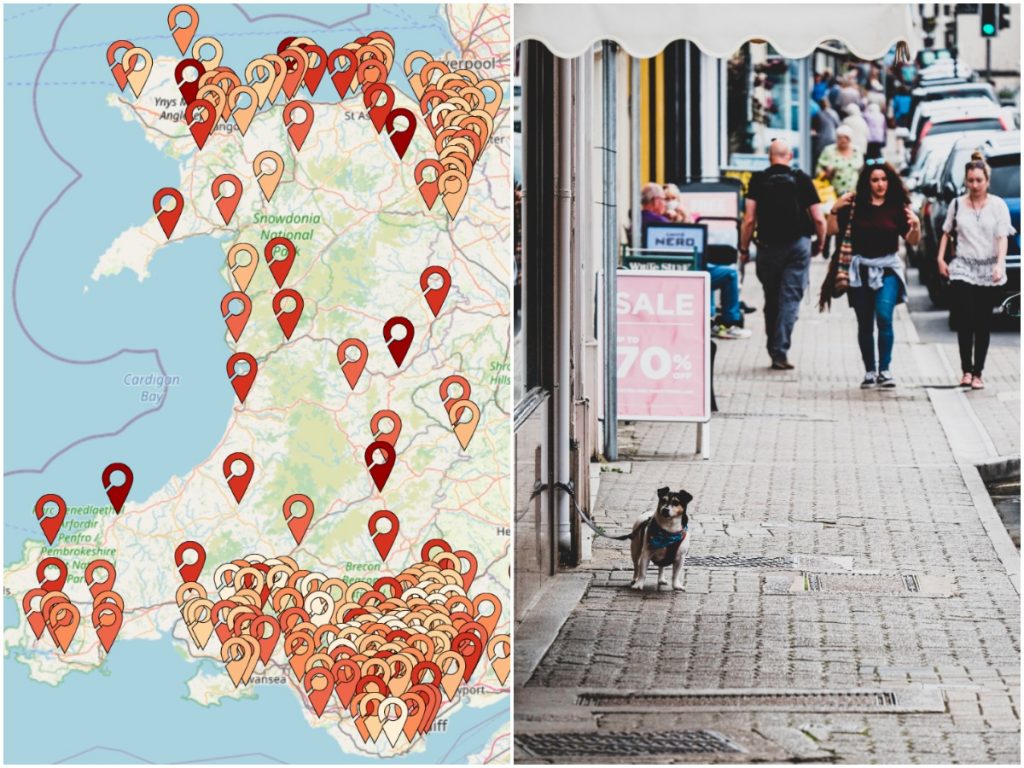New data for the Understanding Welsh Places website will show towns’ access to green space, broadband availability, numbers of public toilets, mental health statistics and much more.
Today, we’re delighted to launch an update to Understanding Welsh Places.
Understanding Welsh Places (UWP) is a bilingual website that presents information on the economy, demographic make-up and local services of more than 300 places in Wales in a quick and easy format.
Covid-19 has highlighted the importance of where we live, who lives in our communities, where we get our food, and where we access our local services.
For better or worse, the pandemic has meant most of us are getting to know our immediate surroundings better than we may have before. We may be noticing for the first time how much we have on our doorstep, or noticing what our places are missing.
We believe in empowering communities by giving them the tools they need to make change, and we have listened to what communities have told us they wanted to see in this next wave of new data. We think it should be the norm for people to have a greater say in how they shape their communities.
Currently, a lot of statistics collected about Wales are only available on a local authority level and, too often, town communities are overlooked by public policy, because of the difficulty in accessing data at that level.
The December 2020 update includes:
- The rollout of over 70 new place descriptions so that the story of each place is clearly summarised as much as possible by people living and working there
- New variables for each place including data on access to services, access to green space, broadband availability, numbers of public toilets, numbers of generative businesses and mental health statistics, all of which will be crucial to how Wales builds its future after Covid
- The addition of new Population Flow maps showing migrations and daily trips within Wales and across the border to England
Understanding Welsh Places already allows people to explore and compare statistics on different towns, including information on:
- Population, age distribution, ethnicity and national identity
- The number of primary and secondary school places per person
- The industry of employment, commuting distances and qualifications
- The number of hospitals, GPs and dentists per person
Hannah Blythyn MS, Deputy Minister for Housing and Local Government said:
“The Welsh Government is committed to empowering town centres and communities. The pandemic has provided an opportunity for people to get to know their community and explore where they live in a way they might not have done before.
“Our Transforming Towns agenda puts Welsh towns at the heart of everything we do, creating opportunities and providing a sense of place. This will not only ensure our towns survive but thrive by better understanding who makes up their communities and what services they require.
On the 10th of December, we will start our series of SMART Town masterclasses to look at how town centres can use data to help them adapt. The UWP website is a perfect starting place for people to access data and start to understand their towns in greater detail and I encourage everyone to visit the website.”
Innovative. Informed. Independent.
Your support can help us make Wales better.
Funded by the Carnegie UK Trust and the Welsh Government, the website has been brought to life by the Institute of Welsh Affairs (IWA) and a consortium of partners. It was built alongside community champions across Wales who believe people should have a greater say in how they shape the places where they live and work.
The site presents information on every place in Wales with more than 1,000 residents and a comparative analysis of every place with more than 2,000 residents.
Understanding Welsh Places aims to bridge the ‘data gap’ around towns and that this will, in turn, inform and influence the development of policies which will help the areas in which so many of us live.
The Wales Institute of Social and Economic Research, Data and Methods (WISERD) at Cardiff University were commissioned to complete the website build. Additional data processing and analysis has been provided by the Centre for Local Economic Strategies based in Manchester.
Jennifer Wallace, Head of Policy at Carnegie UK Trust said, “We are delighted to be supporting communities in Wales to plan for their futures using this new data. Throughout the pandemic we have seen local people coming together to provide mutual support.
We hope this tool helps them take the next step in thinking about how they can work together to improve the social, environmental and economic fabric of their neighbourhoods.”





